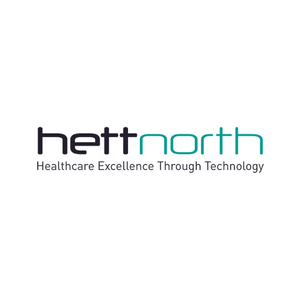In the ever-evolving realm of healthcare, the concept of interoperability has become a linchpin for delivering seamless, efficient, and patient-centered services. Understanding the nuances of interoperability is essential for healthcare professionals, policymakers, and technology stakeholders alike. This comprehensive guide explores the four levels of interoperability and their significance in shaping the future of healthcare.
Levels of Interoperability
Level 1: Foundational Interoperability
Foundational interoperability serves as the baseline, allowing disparate systems to exchange data. At this level, systems can share information, but it lacks standardisation, leading to potential challenges in data interpretation and utilisation. Despite its limitations, foundational interoperability is the first step toward creating a connected healthcare ecosystem.
Level 2: Structural Interoperability
Structural interoperability takes the integration a step further by standardising the format and syntax of exchanged data. This level ensures that data is not only shared but is also organised in a consistent manner, facilitating meaningful communication between different systems. Common standards such as HL7 and FHIR play a crucial role in achieving structural interoperability, fostering more accurate data exchange.
Level 3: Semantic Interoperability
Semantic interoperability addresses the critical issue of data comprehension. At this level, shared data is not only formatted consistently but also carries a shared meaning. This ensures that information is not misinterpreted, leading to more accurate diagnoses and improved patient care. Standardised coding systems and clinical terminologies contribute to achieving semantic interoperability, enabling healthcare professionals to trust the accuracy and relevance of exchanged data.
Level 4: Organisational Interoperability
The pinnacle of interoperability is organisational interoperability, where healthcare entities seamlessly collaborate and share information in a way that transcends individual systems. Achieving this level requires not only technological alignment but also a commitment to shared processes, policies, and governance structures. Successful organisational interoperability leads to comprehensive, patient-centric care and enhances the overall efficiency of the healthcare ecosystem.
Significance of Interoperability in Healthcare:
-
Improved Patient Care:
Interoperability ensures that healthcare providers have access to comprehensive and accurate patient information, leading to more informed decision-making. This, in turn, enhances the quality of care and patient outcomes.
-
Enhanced Efficiency:
Seamless data exchange reduces redundancies in data entry and minimises administrative burdens. This, coupled with streamlined communication, results in increased operational efficiency and reduced costs.
-
Informed Public Health Initiatives:
Interoperability enables the aggregation of large-scale health data, providing valuable insights for public health initiatives. Timely access to accurate information is crucial for identifying trends, managing outbreaks, and improving population health.
-
Empowering Patients:
Interoperability allows patients to access and share their health records across different healthcare providers. This empowers individuals to actively participate in their care, promoting a collaborative and patient-centric approach.
Challenges and Future Outlook
Despite the progress made in interoperability, challenges such as data privacy, security, and varying standards persist. Ongoing efforts by healthcare organisations, policymakers, and technology developers are crucial to overcoming these hurdles.
As we navigate the future of healthcare, achieving higher levels of interoperability will be paramount. Collaborative efforts, the adoption of standardised technologies, and a commitment to data integrity are essential to realising the full potential of an interconnected healthcare ecosystem.
The journey toward achieving interoperability in healthcare is multifaceted and dynamic. From foundational connectivity to seamless organisational collaboration, each level plays a vital role in shaping a healthcare landscape that prioritises patient care, operational efficiency, and data accuracy. Embracing and understanding the four levels of interoperability is not just a technological necessity but a strategic imperative for healthcare stakeholders committed to delivering optimal outcomes in the digital age.
Find out More about Interoperability in Healthcare at HETT North
Join us at HETT North on 28th February in Manchester to find out more about Interoperability in healthcare.
Register for your FREE pass now to enjoy:
- 40+ hours of CPD-accredited content across 6 content streams
- 100+ innovative suppliers
- 1-2-1 meeting opportunities with over 1,400 like-minded peers
- 100+ expert speakers
%20(1).png?width=500&height=58&name=HETT%20insights%20logo%20RGB-04%20(1)%20(1).png)


